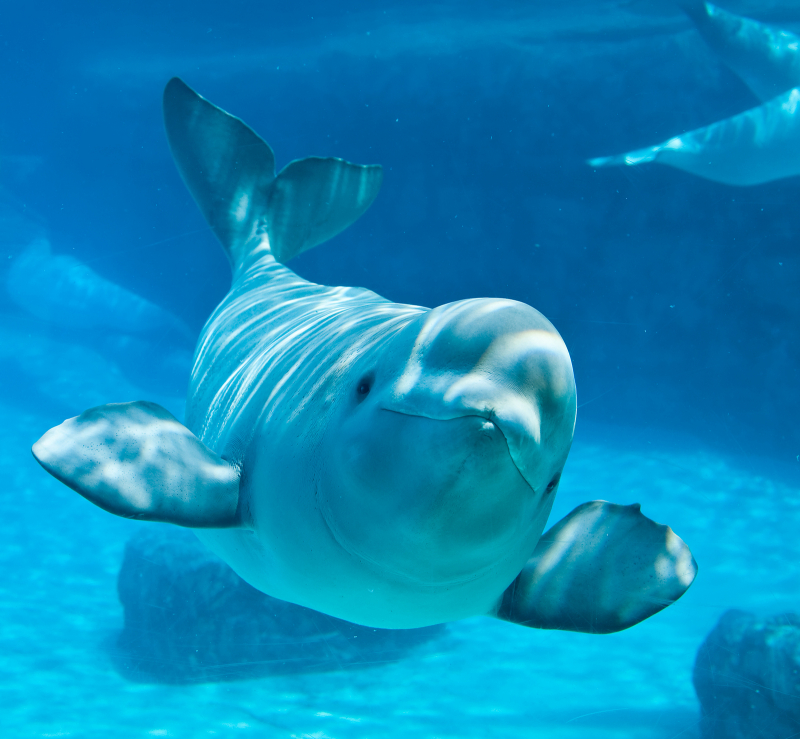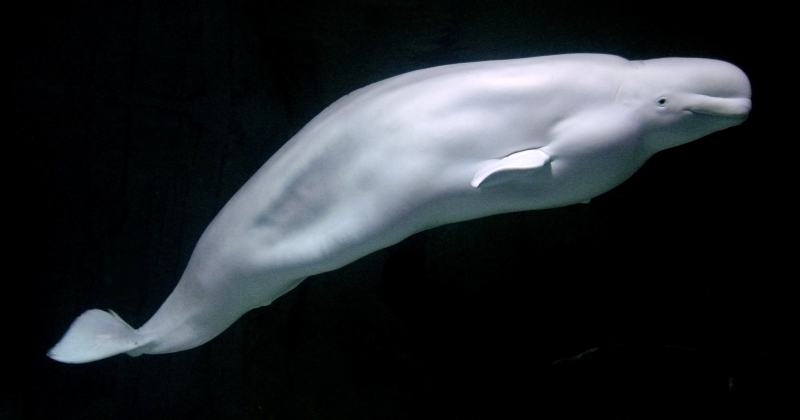Blubber and lack of a dorsal fin a liability in the Arctic
The dorsal fins of certain whales and dolphins may be seen when they breach the water's surface, whereas belugas lack this characteristic, which is one of the interesting facts about Beluga Whales. In addition to making it simpler for them to glide straight beneath sheets of ice, the decreased surface area helps limit heat loss in the chilly Arctic Ocean. Besides, they do have a strong dorsal ridge along the length of their backs, which aids in breaking through ice layers.
A dorsal fin aids swimming stability and turning; it is so beneficial that it has repeatedly developed through convergent evolution (such as in fish and cetaceans). Nevertheless, a dorsal fin might have negative effects in the Arctic despite its putative advantages. A dorsal fin may also make it more difficult for belugas to move and navigate since it adds to heat loss, which is important in such a cold environment.
One way belugas have adapted to living on the sea ice is by developing blubber. Belugas must survive extremely cold water since they swim amid ice floes in and around the Arctic Circle. The U.S. National Oceanic and Atmospheric Administration (NOAA) report that despite seasonal excursions into warmer estuaries and river deltas, they still need to spend extended periods in the water as cold as 32 degrees Fahrenheit (0 Celsius). That necessitates an abundance of blubber, the thick coating of body fat that protects marine creatures from cold climates. According to NOAA, fat in belugas may make up as much as 40% of their whole body weight.













